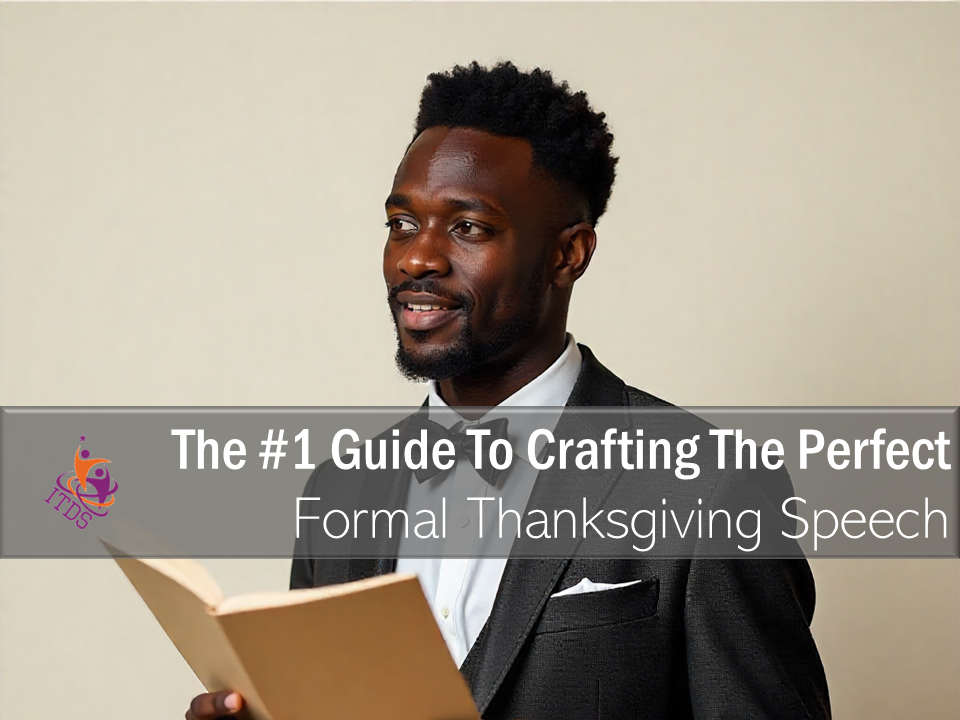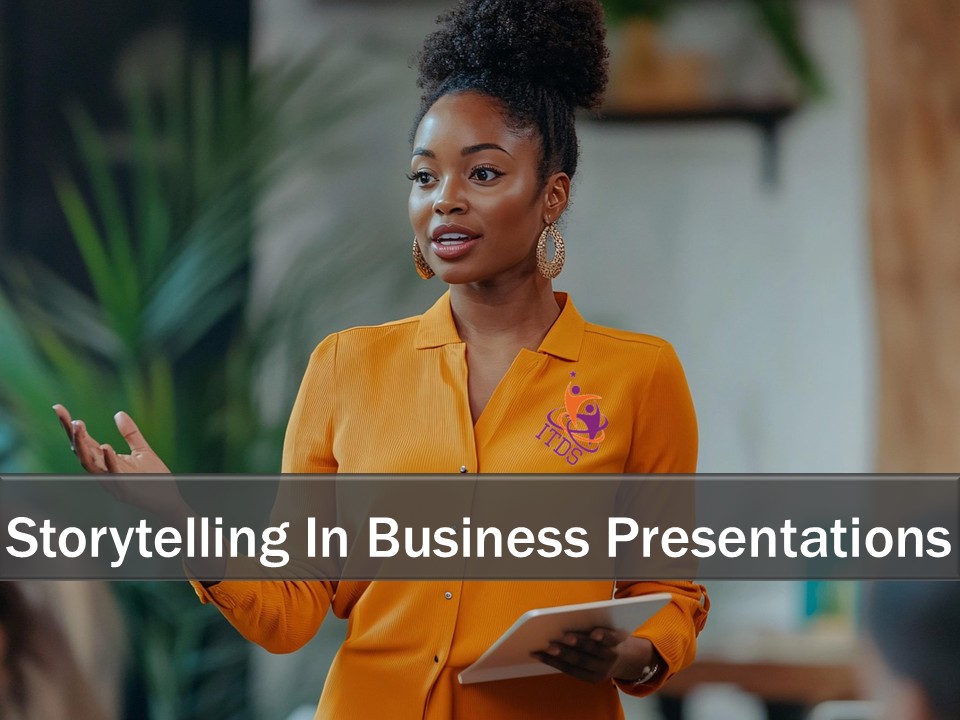
The #1 Guide to Crafting The Perfect Formal Thanksgiving Speech
- Home
- The #1 Guide to Crafting The Perfect Formal Thanksgiving Speech

The thanksgiving speech had dropped heavily into the lap of Aunt Emelda this year.
“How did this happen??” She agonised aloud for the 37th time.
“I am a cook – I deliver delicious food – not fancy speeches followed by red wine toasts!”
But this year was going to be different.
Thanksgiving was also going to be the celebration of a big family reunion and unknown to her, she had “drawn the Matriarch straw” to deliver the thanksgiving speech. Whether she liked it or not, she was now our guest speaker and deserved all the support she could get.
Can you picture this happening to you?
So, what did Aunt Emelda do? She turned to the family public speaking expert for help.
The solution? I’m writing this post, not only to help out my favorite aunt, but to also help you give a great thanksgiving speech, however the task falls to you.
What really is a thanksgiving speech?
Let’s step back and define a Thanksgiving speech.
The tradition of giving thanks dates back to the early settlers, who first expressed their gratitude for a bountiful harvest and the support of their community in 1621.
Much later, a national holiday was established when President Abraham Lincoln proclaimed Thanksgiving Day in 1863.
In 1941, the date was officially set as the fourth Thursday in November by Congress.
So you see, Thanksgiving is more than just a holiday; it’s a celebration of gratitude, family and togetherness.
It follows then that a Thanksgiving speech serves as a powerful way to express these emotions and set the tone for a memorable and meaningful celebration.
How to craft your thanksgiving speech
These speeches can be warm and conversational or a bit more formal, depending on the nature of the celebration.
The one I want to discuss here is the one that is a bit more formal like what Aunt Emelda would be delivering.
Whatever form they take and however long they last, effective thanksgiving speeches will need to have the following elements:
An opening/introduction – that captures the audience attention immediately
The body/main section – which must have a logical structure
An ending/conclusion – which leaves a pleasant lasting impression on your audience
Let’s discuss these in some more details now.
Start with the body/main section of your speech
Listen to me carefully.
You will deliver your speech in the following order: OPENING – body – conclusion.
However, you should prepare it in the following order: BODY – opening – conclusion.
Read that again.
You see, there are several reasons for this.
- First, it’s the most important part of your speech.
- Second, you can clarify your message and message statement much better
- Third, you can more easily decide on an appropriate opening or introduction for a body you have already prepared.
So how do you do structure your speech so that it supports your message, has meaning for your audience and flows smoothly from your opening?
The following steps will work for you:
1. Decide on your message and write down your message statement. Your message could be as simple as “family matters!” and your message statement could be: “Regardless of your age, gender, sexual orientation or religion, as a member of this family, YOU matter and we’re grateful for you!”
This first step is important because now you can go ahead and design your whole speech around your message. And you can’t use your message statement as an introduction for your speech until you have completed this step.
- Mentally or with pen and paper, recall the collection of “gratitude” experiences you have in common with the group as well as your own related personal stories.
- Select the ones that are relevant to the occasion, your audience and your message. Sticking with the “Aunt Emelda” example…Yes it’s a thanksgiving dinner but it is also a family reunion. Therefore, the story of how grateful she was that the man who snatched her bag had run right into a policeman would not be relevant at the dinner.
- Write a brief outline of each story. This would give you a better idea as to if the story is truly relevant to your message and the occasion.
- Now jot down the main point you want to make with each story. You want to show why family matters and that we should all be grateful for family? The story of how your sister gave up her job to look after your mum when she was ill would be ideal.
- Arrange them in some sort of logical order so that collectively they smoothly tell a meaningful story of gratitude and convey your message. This is the heart of your speech.
The opening/introduction of your Thanksgiving speech
The opening of your speech should grab the audience’s attention immediately.
You will not have the time for the long “pre-ramble” like “I am glad to be here…but it was so unexpected…I was not given an opportunity to say no…and on..and on…” You see, most people come for the food. The longer you keep them away from it, the more they will tune out.
There are many ways to grab an audience attention but for a thanksgiving speech, one of the following would work well:
1. Begin with your message statement: “Regardless of your age, gender, sexual orientation or religion, as a member of this family, YOU matter and we’re grateful for you!”
2. State a startling/funny fact – For aunt Emelda this could be: “There were 7 more of us named “Emelda” in this family and I’m grateful we’re not all here today!”
3. Tell a relevant joke or story – “When he was 5 years old, great nephew Jamison rushed up to me and declared “Aunt Emelda, I know how to spell “one hundred!” “Go ahead!” I said sharing his excitement. With all the wisdom of his age he declared “one-zero-zero!” However you spell it, I’m 100% grateful that I’m surrounded by so many members of my fabulous family today…”
4. Use a relevant powerful quotation – In the words of William Arthur Ward: “Gratitude can transform common days into thanksgivings, turn routine jobs into joy, and change ordinary opportunities into blessings.” Today, I’m giving thanks that this family reunion gives me the opportunity to reflect on my role in a warm and loving family.
The important thing to note about each of these openings is that they can lead seamlessly into the body of the speech.
The conclusion/ending of your speech
Whatever you do, do not let your speech conclude like a sumptuous dinner which has oatmeal porridge for dessert. (it happened!)
You should aim to end gracefully at minimum, but ending with panache will give you maximum effect.
However you choose to end your presentation, your ultimate goal is to leave a lasting impression with you audience.
Now there are 4 powerful ways you can do this:
- Bring you speech to an end by summarising your key points and restating you message statement as a powerful call to action.
For Aunt Emelda, this could look something like: “Regardless of your age, gender, sexual orientation or religion, as a member of this family, DON’T you ever forget that YOU matter and we’re grateful for you!”
- Another approach is to end with a powerful quote or saying that captures the spirit of Thanksgiving. Choose one that resonates with your message and leaves your audience with a sense of inspiration and reflection.
For example, Aunt Emelda can end by saying something like “I hope that Alice Morse Earle can forgive me for slightly altering her quotation but “Every family may not be good, but there’s something good in every family!” and so I raise a toast in gratitude for this family and for the good in all of us!
- You can also end your speech with a heartfelt toast or blessing. Raise a glass (of wine) and invite your audience to join you in a moment of collective gratitude, celebration and reflection.
- A call to action (CTA) works very well. This is particularly effective if your speech has a persuasive element. This approach is also highly effective when combined with #1 or 2 above.
Finally, you are ready to deliver your speech

Warning! When you come to deliver your speech, it is not the time to transform yourself into some Shakespearean Orator.
Don’t act surprised. You know exactly what I’m talking. You sit next to a person and you’re having a good laugh at the wannabe hamburger. And then they have to speak. You don’t recognise the voice, the mannerisms and barely the language they are using. Don’t do that!
On the other hand, rely on the following:
Authenticity and enthusiasm
First relax and be yourself. Don’t go researching any speaking “rules.” The last thing you want to bounce up on is information about how many gestures your must make in a minute or how to develop your “speaking voice.”
And yes! I teach public speaking (I know you had to ask!) but I don’t teach choreography for your words.
Be enthusiastic about the content you are delivering. After all, you have prepared well. Speak from your heart, one that is filled with genuine emotion, personal reflection and loads of gratitude, including for the opportunity to speak.
Leveraging your natural style
Of course your posture matters. Stand up straight, feel comfortable and confident and deliver your speech in your natural voice and with enthusiasm.
Trust me, this will help you to take the focus off “you” and place it on your audience and the message you’re delivering to them.
Use “comfortable” body language and make eye contact with several members of your audience. And please note, eye contact is not about staring down an “opponent” to see who looks away first.
Telling your stories well
A thanksgiving speech is sure to swing around on stories so it is important to be able to tell your stories well.
So when telling your stories, be sure to include vivid details and emotions that bring the experiences to life. Describe the sights, sounds, and feelings you experienced and explain how these moments have shaped your position on gratitude and connection.
Additionally, use language that is warm and inclusive. Address your audience as “we” and “us” rather than “I” and “you,” emphasizing the collective experience of gratitude and togetherness.
By making your audience feel valued and included, you can create a more engaging and memorable Thanksgiving speech.
Using humour appropriately
There is no doubt that humour can be a valuable addition to your Thanksgiving speech.
It helps to lighten the mood and create a sense of camaraderie among your audience. It also makes your speech more enjoyable and ensures that it leaves a lasting positive impression on your audience…
But that’s if it’s done appropriately.
If you’re not comfortable being humorous, you can still deliver a good speech. If you do plan to use it, be sure it is appropriate.
One effective way to incorporate humor is through light-hearted anecdotes or playful observations about the holiday.
For example, in a thanksgiving speech, you might poke fun at the chaos of holiday preparations, the quirks of family traditions, or the inevitable food hiccups that always seem to emerge on the occasion.
Avoid jokes that are offensive or divisive and any shade of blue jokes is unwelcomed. Also, practice your stories enough to ensure that you do not deliver the punch line in the middle. (it happened!)
Connecting with and engaging your audience
Don’t for one moment fall into the trap of believing that connecting with your audience happens as a separate activity from your speech.
It happens when you grab your audience with a hot opening. Then hold them with beautifully written and organised content. And finally leave them wanting more with a memorable conclusion.
So how do you do that?
Well, I’ve spent this entire post up to now showing you exactly how.
So if you’ve reached here by skipping out any parts of the post, go back and read them now. That will catch you up.
A few “Don’ts” to remember
- Don’t attempt to deliver your speech without practicing it just because you’re not delivering it at the UN. A number of things can go wrong that would make you wish you did.
- Don’t learn your speech by heart. If you forget any of it, it might impact the rest of the speech.
- Don’t read the entire speech, you want to make eye contact, remember? Here’s a quick eye contact tip for you: Use a marker to highlight about an inch where you want to begin your eye contact. Learn the 2 sentences you will deliver while looking at your audience. Highlight another inch where your eyes will come back to after your eye contact. Rinse and repeat as many times as necessary.
- Don’t speak for too long. While it’s important to convey your thoughts and feelings, be mindful of your audience’s attention span. They might be anxious to get to the turkey. As a guide, for a formal thanksgiving event like Aunt Emelda’s Family Reunion you can go for a maximum of 10 minutes. For less formal occasions, 5 – 7 minutes should suffice.
- Don’t wait around for someone to deliver a vote of thanks unless you were warned beforehand.
Your next “Thanksgiving speech” steps
So there you have it…the #1 ultimate guide to crafting the perfect Thanksgiving speech!
I’ve deliberately kept it light and non-technical while giving you enough information to write a formal speech.
Your next step is to get past your fear of public speaking, follow the steps and come up with your best Thanksgiving Speech! Ever.



